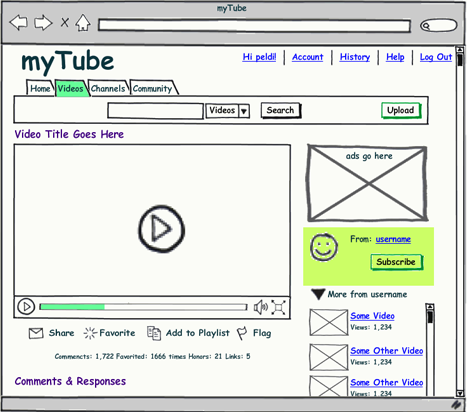Effective communication with stakeholders and clients is critical to the design process itself, but this is not a topic we often address, because, at first glance, it doesn’t appear to contribute directly to our primary goals, which are to create, build, and ship digital products. Certainly, as an industry, we are attuned to client service in a general sense, but there’s no doubt that methods of UX customer communication, education, and collaboration are sometimes overlooked and underutilized aspects of the design process. We can and should treat the elements of stakeholder and client communication as a kind of user experience. And we should design this experience for our UX customers so far as it’s possible to do so.
Considering the overall stakeholder and client experience in a broader sense, it begins with the sales cycle, during which the stakeholders go through the process of deciding to purchase UX design; continues though project management and the design process itself, when they contribute to product creation; and concludes with the launch of a digital product, when a company releases its realized creation into the marketplace. All of these aspects of the UX customer experience, of course, determine whether that experience is an effective, satisfying, and successful one in the eyes of the stakeholder or client.
As UX professionals, the part of the UX customer cycle over which we have the most control is the stakeholder’s or client’s level of engagement in the problem-solving efforts that are part of the design process. So, while it’s beyond the scope of this article to suggest a complete experience for UX customers, I want to explore some of the ways in which we can approach the design phase from the perspective of stakeholders or clients and improve their overall understanding of it.
We need to communicate our design ideas effectively with non-technical customers and keep them engaged in the design process. Investing time and effort in this area brings returns in the form of more efficient design cycles and better products. As UX professionals, we’re adept at envisioning the end states of our labors. Communicating our vision to our stakeholders and clients is critical to our long-term success.
The User Group We Never Knew We Had: Our Stakeholders and Clients
Whether you’re an outside UX consultant or part of a company’s in-house UX design team, more often than not, you are designing, evaluating, and improving a digital product in conjunction with stakeholders and clients who are neither UX professionals nor a product’s users. They’re business people, project managers, marketers, and company owners.
If we are to look at our stakeholders and clients as a user group for the digital product design experience—as we would with any UX project—we must first understand who they are, their goals, the required tasks through which they can reach their goals, and how they perceive both their involvement and ours.
Seeing User Experience from the UX Customer Perspective
From the business side of the equation, it’s worth acknowledging that purchasing UX design can be a tricky task—especially for those who have little experience with the design process. As digital products continue to expand beyond software companies and into all types of businesses, UX professionals will increasingly encounter inexperienced stakeholders and clients who are responsible for specifying, hiring, and managing the services of a UX professional. This is difficult territory to navigate. It’s less like, say, purchasing a car and more like hiring a lawyer to create, write, and negotiate a complex and arcane agreement. There can be a lot of pressure and even some fear on the part of the stakeholder or client.
Though digital products are now ubiquitous, most people do not understand how such products are created. The way we should approach UX customer education and communication depends first on the level of our stakeholders’ or clients’ experience with UX. Because the world is going digital so rapidly, there are large groups of people who have varying degrees of incomplete knowledge about technology in general and the UX process more specifically. Even executives who consider UX every day from the business side do not necessarily understand the design process. So, we shouldn’t make any assumptions about the knowledge that our stakeholders or clients possess. Before a project starts or as a part of a project kickoff, interviewing a stakeholder or client team to get a general sense of what they understand about UX yields dividends down the road. While you may think you know what they’ll say, you may be surprised, too. If all of this sounds familiar, it should: We’re talking about employing basic UX ethnographic research principles to learn more about stakeholders and clients, much as we would try to learn all we can about any other users.
Depending on the type of organization for which you’re working, stakeholder and client teams and their politics can vary greatly. For instance, bootstrapped startups have far fewer stakeholders, each responsible for a number of tasks within the organization, while bigger corporate departments may have individuals representing every specialized position imaginable. Not surprisingly, on a day-to-day basis, most stakeholder or client goals have nothing to do with digital product design. Their other goals might include pleasing the boss, not being embarrassed in a meeting, or even not wasting their time. Such secondary considerations compete with the ideal, overarching goal: to make the best digital product possible for our customers.
Considering Our Communications with the Stakeholder or Client
Once we have a general sense of what our stakeholder or client team knows about UX, we can better tailor our conversations, meetings, and deliverables to them. The UX customer experience is made up of both personal interactions like brainstorming sessions, visioning meetings, and usability tests, as well as artifacts such as site maps, wireframes, and screen drawings. Dan Brown offers some excellent, practical suggestions for both creating information architecture deliverables and presenting them to clients in his book Communicating Design: Developing Web Site Documentation for Design and Planning. His general tips for running effective UX-related meetings include the following:
- “Establish and communicate a purpose. …
- Decide what you want to get out of the meeting before going into it. …
- Think through participant expectations, agendas, and questions. …
- Invite the minimal number of people possible. …
- Send material around before the meeting. …
- Write up an account of the meeting. …
- Take pride in running a good meeting. …
- For new clients, assume the first meeting won’t go well. …”
How can we measure progress? Checking in with your stakeholder or client periodically throughout the design process to validate that you’re actually achieving your communication goals is a simple way both to see what’s working—or not working—and keep their perspective in mind.
If we’re able to make non-technical stakeholders comfortable with the UX process, they can better understand the digital product we’re helping them to create, yielding better results for the project—from the perspectives of both design and management. Ideally, stakeholder or client knowledge and engagement in the UX process should help mitigate such common problems as
- optimizing design to meet the stakeholder’s or client’s preferences rather than those of the users
- introducing unanticipated changes late in the design-and-build process to resolve issues that should have been settled earlier

